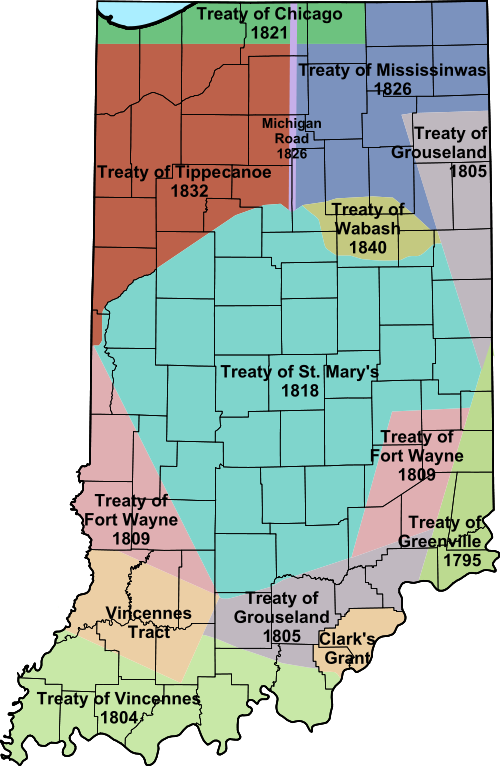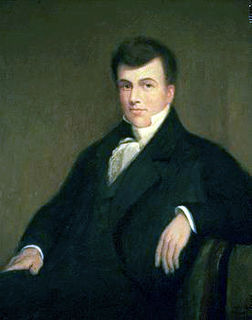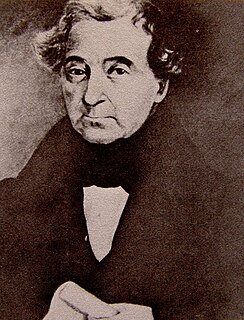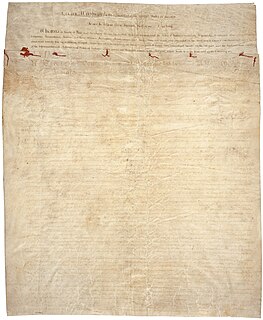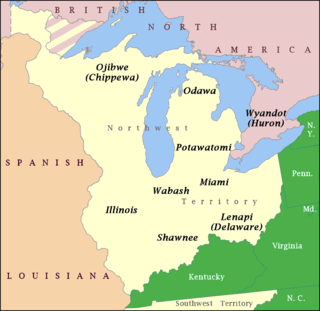
The Treaty of St. Mary's (also known as the Treaty with the Miami, 1818) was signed on October 6, 1818, at Saint Mary's, Ohio, between representatives of the United States and the Miami tribe and others living in their territory. The accord contained seven articles. Based on the terms of the accord, the Miami ceded territories south of the Wabash River covering a large portion of central Indiana, subsequently known as the New Purchase, to the United States. In another tenet of the accord, the United States agreed to pay the Miami a perpetual annuity of fifteen thousand dollars. Moreover, the United States agreed to construct one gristmill and one sawmill, as well as provide one blacksmith, one gunsmith, and agricultural implements. The Miami would also be provided one hundred and sixty bushels of salt annually. [1]

The United States of America (USA), commonly known as the United States or America, is a country composed of 50 states, a federal district, five major self-governing territories, and various possessions. At 3.8 million square miles, the United States is the world's third or fourth largest country by total area and is slightly smaller than the entire continent of Europe's 3.9 million square miles. With a population of over 327 million people, the U.S. is the third most populous country. The capital is Washington, D.C., and the largest city by population is New York City. Forty-eight states and the capital's federal district are contiguous in North America between Canada and Mexico. The State of Alaska is in the northwest corner of North America, bordered by Canada to the east and across the Bering Strait from Russia to the west. The State of Hawaii is an archipelago in the mid-Pacific Ocean. The U.S. territories are scattered about the Pacific Ocean and the Caribbean Sea, stretching across nine official time zones. The extremely diverse geography, climate, and wildlife of the United States make it one of the world's 17 megadiverse countries.

The Wabash River is a 503-mile-long (810 km) river in Ohio and Indiana, United States, that flows from the headwaters near the middle of Ohio's western border northwest then southwest across northern Indiana turning south along the Illinois border where the southern portion forms the Indiana-Illinois border before flowing into the Ohio River. It is the largest northern tributary of the Ohio River. From the dam near Huntington, Indiana, to its terminus at the Ohio River, the Wabash flows freely for 411 miles (661 km). Its watershed drains most of Indiana. The Tippecanoe River, White River, Embarras River and Little Wabash River are major tributaries. The river's name comes from an Illini Indian word meaning "water over white stones".
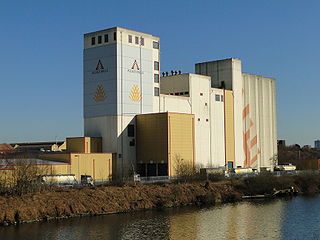
A gristmill grinds cereal grain into flour and middlings. The term can refer to both the grinding mechanism and the building that holds it.
Contents
- Text
- Introduction
- Article 1
- Article 2
- Article 3
- Article 4
- Article 5
- Article 6
- Article 7
- Signatories
- See also
- References
- External links
The treaty resulted in the removal of the Delaware Indians who dominated central and east central Indiana to west of the Mississippi river by 1820, clearing the way for colonization by settlers migrating west from Cincinnati and Ohio River settlements.
